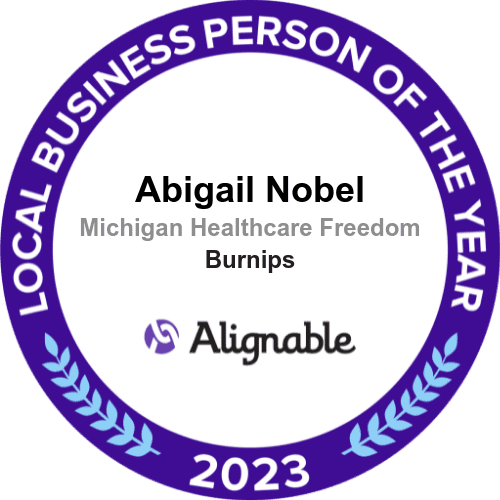
Commentary by Independent Institute's John Goodman brings decades of health policy expertise to bear on this election year.
Clipped for length.
https://www.independent.org/news/article.asp?id=14899
Is There A Trump Health Care Plan? | April 8, 2024Although he rarely talks about it, the most significant gift Donald Trump bequeathed to economic prosperity was deregulation. And the one sector that was deregulated more than any other was health care.
Since Joe Biden has been re-regulating the economy, it’s hard to think of a starker contrast between the two leading presidential candidates this year—and it affects all aspects of health care.
I am not alone in thinking that Trump might have won the 2020 election if he had campaigned on his health care accomplishments. Let’s see if this year’s election turns out to be different.
<clip>
Chronic Illness. There is mounting evidence that patients suffering from diabetes, heart disease, and other chronic illnesses can (with training and the right support) manage a lot of their own care as well as—or better than—traditional doctor therapy can. If they are going to manage their own care, they can do an even better job if they are also managing the money that pays for that care.
HSAs are a natural vehicle. However, current law’s requirement of an across-the-board deductible makes HSAs incompatible with smart insurance design for chronic care. For example, an wise employer might want to make insulin available for free to diabetic employees in order to encourage its use. The same employer might ask noncompliant employees who show up in emergency rooms to pay for that care out of their own account.
Under guidance issued by the Trump administration, employers and insurers can now provide first-dollar coverage for the purchase of maintenance drugs for 13 chronic conditions without running afoul of HSA regulations.
More needs to be done. HSAs ought to be completely divorced from the high-deductible requirement. Let the market, rather than government, make decisions about the optimum role of cost-sharing.
Another important development in the first Trump administration was the move to encourage “focused factories” in Medicare. In contrast to the rest of the health-care system, Medicare Advantage “special needs” plans can specialize in 15 chronic conditions. These plans can exclude applicants who don’t have the condition. They can also ask health questions and request medical records.
The Obamacare exchanges would be enormously improved if they allowed the same sort of specialization and the same type of risk adjustment that we now find only in the Medicare Advantage program.
Round-the-Clock Primary Care. Concierge doctors used to be available only to the rich. Today “direct primary care” (DPC) is much more affordable. Atlas MD, in Wichita, Kan., for example, provides all primary care along with 24/7 phone and email access. They offer discounts on lab tests and generic drugs for less than what Medicaid pays. The cost: $50 a month for a middle-aged adult and $10 a month for a child.
An unfulfilled goal of the first Trump administration was to allow employers to put money into individual accounts from which the employees could make monthly payments to DPC doctors of their own choosing.
This should be a high priority in a second Trump term.
A Future Agenda. Space does not permit a discussion of other reforms, including liberating Association Health Plans, requiring hospital price transparency and expanding options under Medicare Advantage.
But I hope I have made clear that Donald Trump does not need a new health policy agenda. He merely needs to complete the agenda of the first Trump administration.
The vision behind the Trump agenda can be found in Reforming America’s Healthcare System Through Choice and Competition. This 124-page Health and Human Services document from 2018 argues that the most serious problems in health care arise because of government failure, not market failure.
It’s time to dust off that document and re-read it.
John C. Goodman is Senior Fellow at the Independent Institute, President of the Goodman Institute for Public Policy Research, and author of the widely acclaimed, Independent books, A Better Choice: Healthcare Solutions for America, and the award-winning, Priceless: Curing the Healthcare Crisis. The Wall Street Journal and the National Journal, among other media, have called him the “Father of Health Savings Accounts.”
Dr. Goodman is frequently invited to testify before Congress on health care reform, and he is the author of more than fifty studies on health policy, retirement reform and tax issues plus ten books, including Living with Obamacare: A Consumer's Guide; Lives at Risk: Single Payer National Health Insurance Around the World (with Gerald Musgrave and Devon Herrick); Leaving Women Behind: Modern Families, Outdated Laws (with Kimberley A. Strassel and Celeste Colgan); and the trailblazing Patient Power: Solving America's Health Care Crisis, that sold more than 300,000 copies. His other books include The Handbook on State Health Care Reform, National Health Care in Great Britain: Lessons for the U.S.A., Economics of Public Policy: The Micro View (with Edwin Dolan), Fighting the War of Ideas in Latin America, and Privatization.
Dr. Goodman received his Ph.D. in economics from Columbia University, he has been President and Kellye Wright Fellow in Health Care at the National Center for Policy Analysis, and he has taught and completed research at Columbia University, Stanford University, Dartmouth College, Southern Methodist University and the University of Dallas. In 1988, he received the prestigious Duncan Black Award for the best scholarly article on public choice economics.






